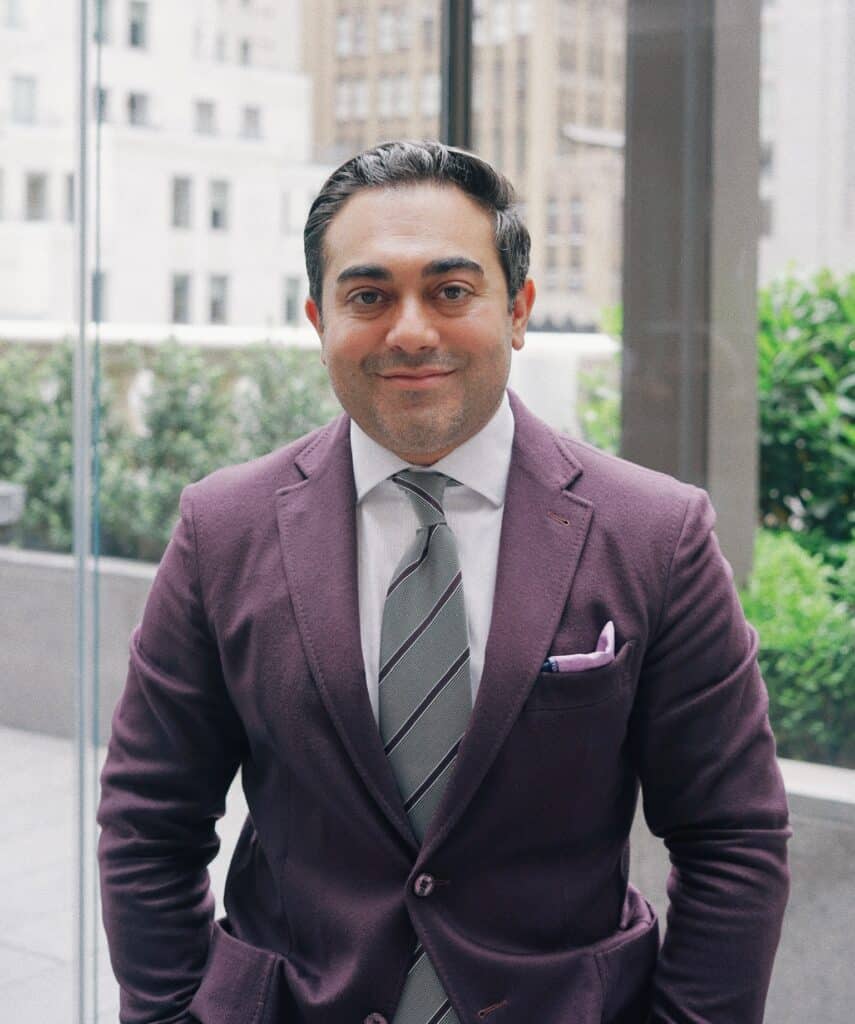A New York plastic surgeon explains why he built an in-office recovery suite and how enhanced, wellness-driven post-op care can reshape patient outcomes.
In aesthetic medicine, recovery is becoming more than a postscript—it’s the next frontier. As patient expectations evolve, surgeons are reimagining what happens after the procedure, blending medical oversight with wellness-focused therapies that support healing and enhance outcomes. From IV therapy and lymphatic drainage to hyperbaric oxygen and nutrition protocols, post-surgical care is shifting toward a holistic model that treats recovery as an extension of the surgery itself.
Sachin M. Shridharani, MD, a board-certified plastic surgeon and founder of Luxurgery in New York City, is at the forefront of this movement. This fall, he introduced a dedicated in-office recovery suite designed to deliver concierge-level post-op care, complete with 24/7 nursing, targeted wellness therapies, and evidence-informed healing protocols. In this conversation with Plastic Surgery Practice, he not only explains why recovery is as critical as the procedure itself, but also shares the checklists, staffing considerations, and operational frameworks he uses to help peers understand what it takes to build a model like this successfully.

Plastic Surgery Practice: Why do you believe the recovery period is just as important as the surgical procedure itself when it comes to achieving the best outcome?
Sachin M. Shridharani, MD: Preoperative and post operative care are imperative to having an optimized patient experience and surgical journey. The recovery period is super important because it’s what the patient does afterwards, in conjunction with the surgeon’s guidance and advice that will ensure that the patient has a good recovery. Looking out for infection, making sure that nutrition is optimized to heal, and appropriately ambulating and walking will help prevent DVTs or venous thromboembolisms, which can be catastrophic in the postoperative period. I like to say to patients that I did my part during surgery. After surgery, you have to do your part. That’s what leads to a great partnership and good surgical outcomes.
PSP: You opened a dedicated in-office recovery suite in September. Can you walk us through the services offered and how they differ from a typical recovery setup?
Shridharani: Yes, we’ve launched a dedicated recovery suite, and it is going really well for the patients who’ve already stayed. We’re learning so much about what patients are actually looking for when they have access to the office right on site, yet they feel as though they’re in a hotel.
Currently we offer several services immediately after surgery, including lymphatic drainage, IV therapy and a curated food menu that we know will aid in the healing process—ie, foods high in protein and low in sugars that won’t spike glycemic indexes or cause wild fluctuations. Also, it’s important to minimize other types of inflammatory foods, such as dairy, that can be tough on the gut immediately after general anesthesia. We also have the ability to provide oxygenation and round the clock medical monitoring, even though the patients have been officially discharged from the facility in the recovery room.
PSP: You mentioned the importance of minimizing inflammation and supporting healing through nutrition and therapies like lymphatic drainage. Have you observed measurable differences in complication rates, swelling, or patient satisfaction since integrating these services?
Shridharani: Though I am speaking from anecdotal experiences and my observations, there is definitely tremendous value to optimizing nutrition and incorporating therapies like lymphatic drainage in expediting the healing process. Not everything that we do is in the form of a clinical trial but seeing how patients respond to some of these therapies definitely has a positive impact in expediting the recovery process.
PSP: For other surgeons considering adding in-office recovery or wellness services, what infrastructure or staffing considerations proved most critical to get right from the start?
Shridharani: The main consideration is having an excellent team that is committed to patient care. There is no doubt that wellness services cannot be performed alone or accomplished with just one or two team members that buy in to understanding the needs of the patient or a 24/7 model. The culture has to be patient centric. Once you have the right team, which, in my opinion is the hardest part, an infrastructure that supports warmth, positivity and calm is paramount. The space should be airy and light. Patients are there to heal. That is the overarching theme.
This is a very lengthy list but here is what I recommend:
- Physical Space & Design
- Dedicated Recovery Area: Ensure a quiet, comfortable, and private space for post-procedure recovery. It should be easily accessible from procedure rooms.
- Wellness Treatment Rooms: Design rooms for services like IV therapy, massage, or aesthetic treatments with appropriate plumbing, lighting, and ambiance.
- Compliance & Safety: The space must meet local health codes, ADA compliance, and be equipped for emergency response.
- Staffing & Training
- Specialized Personnel: Hire or train staff with experience in post-op care, such as RNs or licensed aestheticians, depending on services offered.
- Cross-Training: Staff should be cross-trained to assist with both surgical and wellness services to optimize efficiency.
- Patient Experience Focus: Wellness services often require a hospitality mindset—staff should be trained in concierge-level service.
- Legal & Insurance
- Licensing: Ensure all services are covered under your practice’s license or obtain additional ones if needed.
- Malpractice & Liability Coverage: Update insurance policies to reflect new services and staff roles.
- Consent & Documentation: Create tailored consent forms and documentation for wellness services.
PSP: How did you evaluate the business case for building an in-office recovery suite—both in terms of cost and how it integrates with your surgical schedule or patient flow?
Shridharani: Here’s the checklist I used to evaluate.
- Upfront Costs:
- Construction & Design: Renovation or build-out costs for a recovery suite, including medical-grade finishes, privacy features, and comfort amenities.
- Equipment & Furnishings: Recovery beds, monitoring equipment, emergency supplies, and luxury touches (eg, aromatherapy, entertainment systems).
- Licensing & Compliance: Costs associated with meeting regulatory standards and obtaining necessary permits.
- Ongoing Costs:
- Staffing: Salaries for nurses, recovery coordinators, and support staff.
- Supplies: Consumables for post-op care, medications, linens, and refreshments.
- Maintenance: Cleaning, repairs, and equipment servicing.
- Integration with Surgical Schedule & Patient Flow
- Scheduling Synergy: Recovery suite availability must align with surgical volume.
- Staff Coordination: Recovery staff must be looped into the surgical schedule to ensure readiness and smooth patient handoff post-procedure.
- Patient Experience Flow:
- The suite should be located near procedure rooms to minimize patient movement.
- Clear protocols for pre-op briefing, post-op monitoring, and discharge are essential.
- Data Tracking:
- Practices often track metrics like average recovery time, patient satisfaction scores, and suite utilization rates to refine operations.
PSP: Are patients increasingly seeking practices that offer these concierge-style recovery options, and how do you communicate the value to those who may view them as optional luxuries?
Shridharani: Yes, patients are increasingly drawn to practices that offer concierge-style recovery options, especially in the aesthetic and elective surgery space. These services align with a broader trend toward personalized, luxury healthcare experiences where comfort, privacy, and convenience are prioritized alongside clinical outcomes. Patients appreciate recovering in a serene, private environment rather than a busy outpatient facility or at home without support. Having trained staff onsite for immediate post-op care provides reassurance and can reduce anxiety. Streamlined care in one location minimizes travel and coordination, especially for high-profile or busy individuals.
PSP: Where do you see the future of post-surgical recovery headed in aesthetic medicine over the next 5 years?
Shridharani: The future of post-surgical recovery and aesthetic medicine in the next 5 years will continue to progress to incredibly bespoke and curated protocols that are unique to patient needs and demands. We’re already working on what our protocols will be for specific patients that are healing from a facelift, a tummy tuck, or liposuction or fat transfer. Fundamentally what we’re really hoping to do is create very curated pathways and protocols so patients experience an attention to detail, not only before and during surgery, but after as well.
The immediate postoperative period is the most critical in the healing process and can have a major impact on the way that the entire recovery goes, which can last up to a year in certain surgical procedures. The future is exciting for thinking about ways to continue to provide patients with the most tailored comfort measures and pathways to healing after undergoing elective procedures. PSP
Photo: ID 186172555 © Noipornpan | Dreamstime.com





